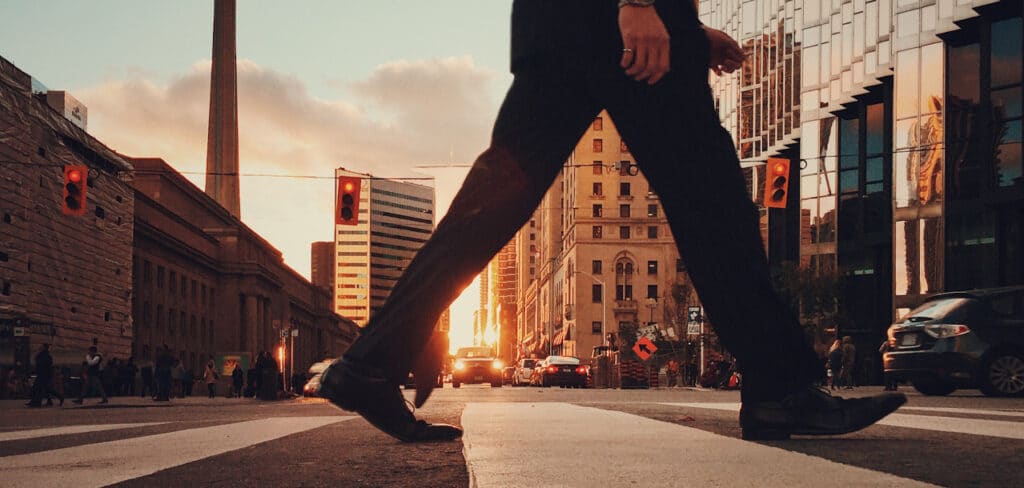
It’s a common belief that achieving success in our careers or personal lives will lead to greater happiness and life satisfaction. However, social and developmental psychology research has shown that this is not always the case. In fact, the correlation between achievement and happiness is often weak or non-existent. (Diener & Seligman, 2002).
Success at a cost
One reason for this is that achievement is often accompanied by pressure, stress, and anxiety. High achievers may feel that they are constantly under scrutiny and must maintain their success in order to be seen as valuable or worthy. This pressure can lead to burnout, emotional exhaustion, and a sense of emptiness or lack of fulfilment (Curnow, 2019).
For example, Olympic gold medalist Michael Phelps achieved unprecedented success in his swimming career but struggled with depression and suicidal thoughts. Phelps stated in an interview with CNN (2018) that he had achieved everything he had ever wanted in his swimming career, but he still felt empty and lost. Similarly, billionaire entrepreneur Elon Musk has reported feeling depressed despite his many accomplishments. Musk once tweeted, “The reality is great highs, terrible lows and unrelenting stress. Don’t think people want to hear about the last two.”
Mindset and habits
These anecdotes are supported by cognitive and behavioural psychology research, which suggests that our level of happiness is influenced more by our mindset and daily habits than by external factors such as achievement or material possessions (Lyubomirsky, Sheldon, & Schkade, 2005). Studies have shown that individuals who practice gratitude, mindfulness, and social connection tend to report higher levels of life satisfaction, regardless of their achievements (Lyubomirsky, 2013).
Social support and emotional stability
One study by King and Hicks (2007) found that life satisfaction was positively correlated with social support and emotional stability, but was negatively correlated with ambition and achievement. The researchers suggested that high-achieving individuals may prioritise their goals over their relationships, leading to a sense of isolation or disconnection.
Conclusion
In conclusion, while achievement can certainly bring a sense of accomplishment and pride, it’s important to recognise that it doesn’t necessarily guarantee happiness. The pressure and stress that often accompany achievement can lead to feelings of emptiness or lack of fulfilment. It’s important to focus on cultivating positive habits and a healthy mindset in order to lead a fulfilling and satisfying life, regardless of external accomplishments.
References:
Curnow, T. (2019). The dangers of high achievement: How success can lead to burnout. Psychology Today. Retrieved from https://www.psychologytoday.com/gb/blog/the-couch/201904/the-dangers-high-achievement-how-success-can-lead-burnout
Diener, E., & Seligman, M. E. (2002). Very happy people. Psychological Science, 13(1), 81-84.

“All truly great thoughts are conceived by walking.” 1 So said Friedrich Nietzsche in his 1886 philosophical treatise Beyond Good and Evil. In the more than a century that has passed since that book’s publication, many other leading public thinkers from Albert Einstein to Steve Jobs also preached the virtues of walking as a tool for thought. And they were right to.
The Stanford Strolling Experiment
A 2014 study2 co-authored by Marily Oppezzo, a Stanford doctoral graduate in educational psychology, and Daniel Schwartz, a professor at Stanford Graduate School of Education, published in the Journal of Experimental Psychology: Learning, Memory and Cognition found that walking dramatically enhances creativity.
176 volunteers, mostly Stanford undergraduates, took part in the study. Across four marginally varied experiments, the study assessed the difference in creativity that emerged when the subjects were sat in front of a drab wall, walking on a treadmill (also in front of a drab wall), walking outside, sitting outside, and being pushed in a wheelchair outside. They assessed creativity through cognitive tasks commonly used to measure “divergent thinking”, marking the novelty of an idea as an indicator of its creativity. For example, when asked for the possible use of a loose button, one participant offered, “as a doorknob for a dollhouse.” This constituted a creative response.
The findings showed that not only does walking enhance creativity by as much as 60%, but that the positive impact of walking outside is only minimally more than walking inside. In other words, it is the act of walking itself that produces the results, not the surroundings. As the authors note, “While research indicates that being outdoors has many cognitive benefits, walking has a very specific benefit—the improvement of creativity.”
The results also showed that creativity remained high when participants who had just gone for a walk then sat down to undertake a task. We are not just creative when walking, but for a period of time afterwards too.
Creativity, not mood
A similar study3 was conducted by researchers at the University of Graz in Austria, published in Scientific Reports in 2020. The findings were along the same lines, though with an interesting twist. While it also concluded that, “active people come up with more and better ideas during tests of their inventiveness than people who are relatively sedentary” 4, it then factored in happiness too.
Its findings? While greater activity contributed to increases in both happiness and creativity, the two were not interlinked. In other words, being happy does not make one more creative.
This point is both backed up and contradicted by a 2018 study5 in The Journal of Positive Psychology. While this study, using a sample of 658 young adults over a thirteen-day period, agreed that undertaking creative tasks does not necessarily lead to one being happy, it did result in participants having greater energy and feeling more fulfilled. Creative output can stem from or exacerbate negative emotions but embracing that negativity and wielding it within one’s creative arsenal can foster a greater sense of meaning and engagement, if not necessarily fixing deeper lying issues.
Confined creativity
Creativity is not the reserve of creative professions. One need not be an artist, musician, or poet to benefit from a boost to those creative juices. Creativity has endless benefits across almost all endeavours—professional and personal.
As Michele Root-Bernstein, co-author with Robert Root-Bernstein of Sparks of Genius6, surmises, “It’s the problem-solving processes they exhibit rather than the content or craft that make [people creative]. Just about anything we do can be addressed in a creative manner, from housecleaning to personal hobbies to work.”7 Self-imposing limits on our creative potential based on arbitrary measures like job title benefits no one. Creativity can and should be wielded by all, especially when something as universal as walking can help.
The static age
We are more sedentary than ever8. Strewn on our sofas, the latest streaming venture spills from the screen ahead of us while global catastrophes play out for cheap clicks on the one in our hands. We are in an era of perpetual information, digitally overloaded, mentally fatigued. And as a result, creatively stifled. Walking can serve as a simple fix, not to mention a welcome respite from the virtual onslaught.
Three brain researchers, writing in the journal Frontiers in Public Health, posit that our complex human cognition, including our remarkable capacity for innovation, developed alongside our ability to walk9 in an evolutionary sense. So, opting for that daily stroll may not just be a way of experiencing nature but embracing your own. And given the current state of global economic affairs, walking is one of the cheaper routes to inspiration available too.
Mindless innovation
The reasons for walking’s impact on creativity aren’t fully understood but have been widely speculated. Its rhythmic nature is thought to have the greatest effect as it allows walking to work in a similar way to meditation and other activities that incite a semi-fugue state. Rhythm is known to lower brainwave frequency. The lowest frequencies our brainwaves reach throughout the day are right before we sleep and right after we wake up, known as alpha waves10. This state appears to be the best at inducing creative thought.
Essentially, the less active our brains are, the further their reach may expand. Think of all the times the name of that song you were desperately trying to remember came to you in the shower or during any other such everyday act in which the brain is seemingly unrequired, and you’ll recognise that mundanity can free our minds in surprising ways. The simplest acts help access our deepest complexities.
This is another reason it may be best to eschew our phones when walking. Enjoyable as listening to music or a podcast may be, it is keeping our brainwaves active, and thus potentially limiting the beneficial effects walking can produce.
Walk the walk
Hippocrates called walking, “man’s best medicine.”11 Proverb fans may prefer to sub in laughter. The more practical amongst us, penicillin. But walking has certainly proved to be an effective and enduring form of creative inspiration.
References
1 Nietzsche, Friedrich Wilhelm, 1844-1900. Beyond Good and Evil : Prelude to a Philosophy of the Future. London, England ; New York, New York, USA :Penguin Books, 1990.
2 https://www.apa.org/pubs/journals/releases/xlm-a0036577.pdf
3 https://www.nature.com/articles/s41598-020-68632-9
4 https://www.nytimes.com/2021/02/03/well/exercise-creativity.html
5 https://www.tandfonline.com/doi/abs/10.1080/17439760.2016.1257049
6 Root-Bernstein, R., & Root-Bernstein, M. (1999). Sparks of genius: The thirteen thinking tools of creative people.
7 https://www.psychologytoday.com/gb/articles/200911/everyday-creativity
9 https://www.ncbi.nlm.nih.gov/pmc/articles/PMC4879139/
10 https://www.healthline.com/health/alpha-brain-waves#what-are-they
11 https://news.stanford.edu/2014/04/24/walking-vs-sitting-042414/
